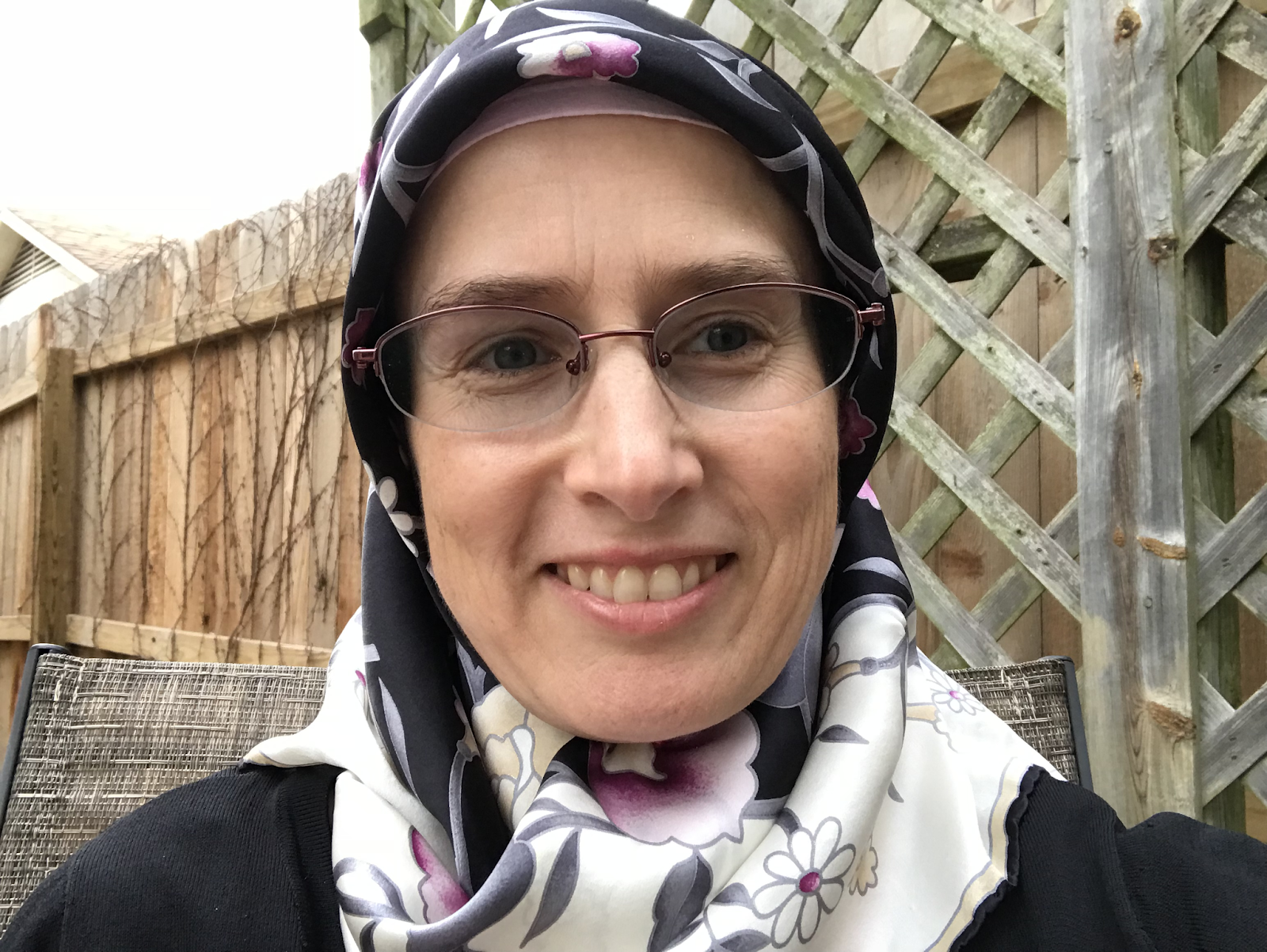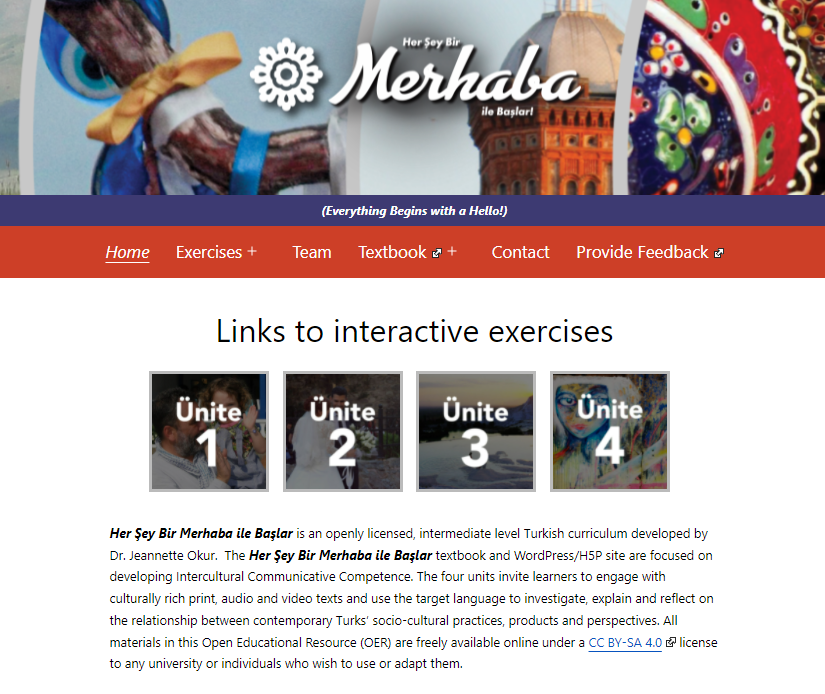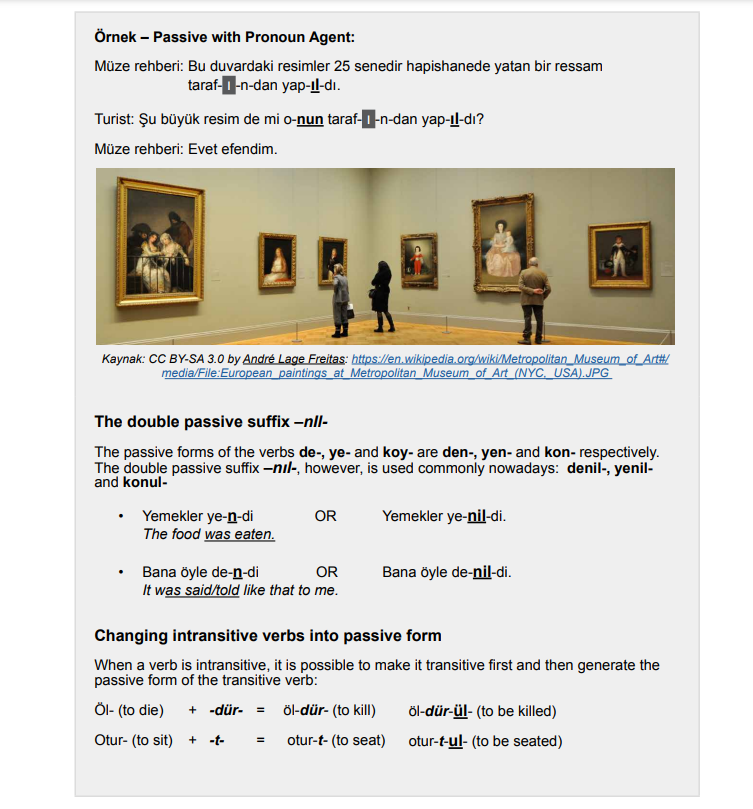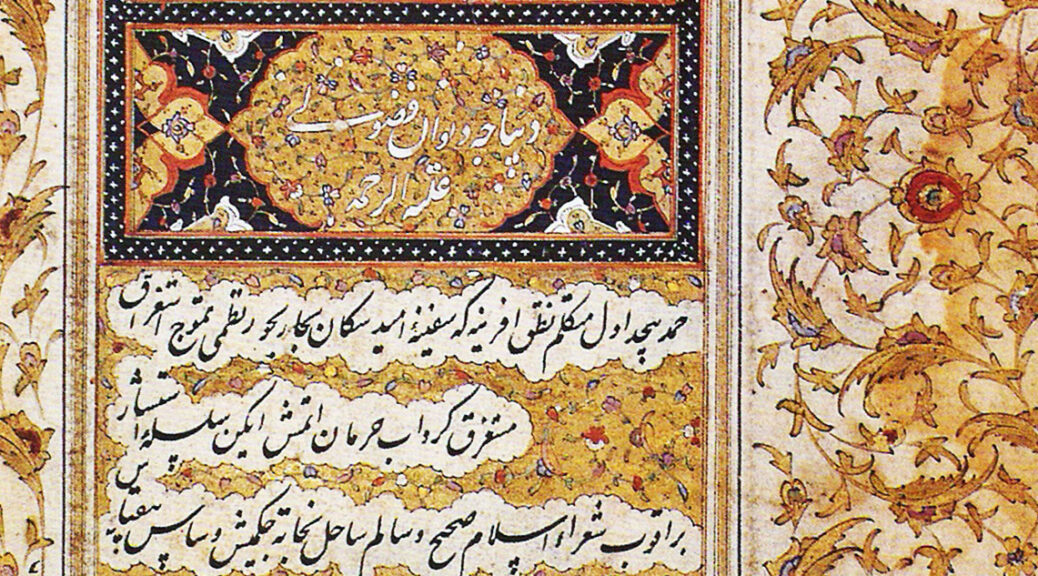In observation of Open Education Week, UT Libraries is proud to spotlight a few of our talented faculty members who are on the forefront of the open education movement as open educational resource (OER) authors! Because we can’t limit ourselves to just one week, we’re excited to celebrate open education throughout the month of March.

We’re continuing the series today with Dr. Jeannette Okur (she/her/hers). Dr. Okur coordinates the Turkish Studies program in the Department of Middle Eastern Studies at the University of Texas at Austin, and teaches a variety of courses in language, literature, film, and cultural studies. She completed her doctoral degree in German Language and Literature at Ankara University in 2007, in a department known for its engagement in the field of comparative literature. Dr. Okur is interested in approaches to teaching ‘culture’ and ‘society’ in the foreign language classroom, approaches to teaching critical reading and writing skills, and interdisciplinary approaches to the study of literature and film. Her Turkish textbook and online materials for Intermediate level students of Turkish, titled Her Şey Bir Merhaba ile Başlar, were published this past year by the Center for Open Educational Resources and Language Learning (COERLL). Her current literary research explores the relationships between perpetrators and victims of political violence portrayed in transnational novels by Turkish- and Iraqi-Kurdish writers in exile.
Dr. Okur graciously shared her experiences developing and sharing OER in the interview below.
Do you recall how you first became aware of open educational resources (OER) or the open education movement more broadly?
Yes, I learned about COERLL and OER textbooks through a presentation given by Dr. Fehintola Mosadomi about her multimedia OER project, Yorùbá Yé Mi, which was later published in 2011. I remember her talking about the dearth of materials available for teaching Yoruba culture and language and how she sought to rectify that problem by creating online materials that would be affordable and accessible to the small, scattered groups of students learning Yoruba. This idea of an alternate route for publishing curricular materials for a Less Commonly Taught Language (LCTL) stuck with me; and after my first option for publishing Turkish language materials via a traditional copyright failed, I turned to COERLL to find out more.

Last year, you openly published Her Şey bir Merhaba ile Başlar! Can you tell us a little about this resource? What was your primary motivation for developing it?
Sure, Her Şey bir Merhaba ile Başlar is a set of openly licensed curricular materials designed to facilitate Turkish language learners’ progression from the Intermediate-Mid to the Advanced-Mid proficiency level. Informed by the “Flipped Classroom” and “blended instruction” models, these online and print-on-demand materials encourage learners to use language to investigate, explain and reflect on the relationship between contemporary Turks’ socio-cultural practices, products and their perceptions of family, love and marriage, environmental issues, art, film, and politics.

The Her Şey Bir Merhaba ile Başlar curriculum is composed of multiple components which exist over several platforms. All components are accessible on COERLL’s Her Şey Bir Merhaba ile Başlar project page. There, instructors and learners can access and use the media-rich textbook, the student guide, the teacher guide, and the WordPress/H5P site. Quizlet sets, YouTube videos, and other linked audio, video and print materials are built into the textbook itself. The primary organization of the course is through the Her Şey Bir Merhaba ile Başlar textbook and the WordPress site, which houses interactive, auto-correct exercises and activities, built in H5P and organized in modules that correspond to the four units’ lessons. The textbook is downloadable for free in PDF or adaptable Google Docs format and is also available for purchase as a print-on-demand book from Lulu.com and Amazon.com.

My initial motivation for developing it stemmed from frustration with the existing teaching materials for the Intermediate level, which did not speak to the interests of my students or meet their practical learning needs, much less match the broader learning objectives I’d envisioned for my second-year Turkish language courses. Over time, I realized that my approach to scaffolding texts and facilitating vocabulary/grammar practice might appeal to other North American teachers of Turkish as well. From the beginning to the end of the project, I sought to create units that would do the following:
- Introduce learners to culturally and socially significant phenomena in Turkey today and hone their cultural analytical skills through tasks that foster reflection, comparison, and articulation of findings.
- Introduce learners to a variety of authentic print, audio and audio-visual materials aimed at native Turkish audiences and guide them to use (and reflect on) the reading, listening, and viewing comprehension strategies needed to understand these Advanced-level texts.
- Engage learners in active recognition and repeated practice of new vocabulary and grammar items.
- Guide learners through meaningful practice of oral and written discursive strategies specific to the Advanced proficiency level.
Why was it important to you to license your work openly?
Most teachers of LCTLs in North America spend countless hours creating and revising their own curricular materials and assessments each year, without ever being able to publish them, because no traditional publisher will ever make a profit off of their sales. As a result, much of these individuals’ life-long creative work disappears when they retire from the field – and is rarely shared with others along the way. Hence, it was important for me to license my work openly in order to be able to share it professionally (at all). I believe strongly that OER projects bring wider visibility to pedagogical work and facilitate professional development among the community of educators who engage in critical reflection of educational resources. Much attention has been paid to the student end of the equation, for it is certainly true that OER materials increase access to educational materials for a wider range of learners, especially those underserved by traditional educational opportunities. They help students, districts, and educational institutions save money; and because they often include more diverse perspectives and representation and can be updated or adapted quickly for specific learner groups, they improve student performance and satisfaction. Their accessibility also attracts informal learners; thus, they can serve as a gateway from informal learning to formal educational programs. But I think the innovative professional communities being built thanks to Open Educational Practices (OEP) are just beginning to be discovered. Just as open scholarly resources foster more scholarly research, open pedagogical resources foster pedagogical exchanges that are more detail-oriented and can yield practical, sharable outcomes.
What has been the biggest benefit of using OER?
That’s a good question, to which I don’t yet have a data-driven answer, because I’ve only just started using the materials in their published form in my classroom this year. I’m sure that the current published materials are 100 times more user-friendly and aesthetically pleasing than their predecessor pilot-versions, which involved hundreds of Word docs housed on Canvas and interactive exercises housed on a more antiquated auto-correct platform. Thanks to Nathalie Steinfeld Childre, COERLL’s graphic designer and web developer, the materials are now beautiful, seamlessly integrated via the media-rich textbook and the WordPress/H5P site, and much easier for my students to navigate, both in and out of the classroom.
However, I would like to learn more about other instructors and learners’ experiences with the materials. To my knowledge, Her Şey Bir Merhaba ile Başlar! is currently being used (at least in part) in second-year Turkish language courses at five universities and one university consortium in the United States. To learn more about how these users are implementing the materials and how satisfied they are with them, I hope to conduct a qualitative survey and/or interviews with instructor and student users in the next several months. I hope that this survey and interview data will give us better insight into how well the OER has met its goals.
What was the most challenging part of producing your own textbook?
There is definitely a learning curve to understanding how the various open licenses relate to each other, and what can and cannot be used in your work due to the particular license you’ve chosen. Beyond that, I sometimes found it very difficult to find written texts that were level-appropriate, interesting and openly sourced; and so I spent a lot of time seeking permission from newspaper columnists, editor-in-chiefs, and other authors to use their copyrighted material in this educational project. The concept of OER is not well-known in Turkey, beyond the realm of academia that is. Convincing some authors or institutions that their work would receive a wider audience and contribute to international language learners’ knowledge and understanding of Turkish culture and society (without detracting from their existing published status or profits) was a difficult task. In some cases, I succeeded, received written permission, and was able to integrate fantastic pieces of original work into the textbook; in other cases, my request was rejected. More often than not though, I simply got no answer – which COERLL and I decided to interpret as a “no”. Producing an openly sourced foreign language textbook requires persistence and patience and the ability to “think outside the box” when one cannot at first find exactly what one is looking for. It’s really a labor of love, I think.
How have your students responded to the material? Did you notice a change before and after using OER?
My students have responded positively to the material, and certainly like the fact that it is free. I have only been teaching with the materials in their current published form since August, and so haven’t been able to detect a huge difference in students’ response to the materials, although I think that the integrated nature of everything makes for easier navigating. I can say, however, that some of the content has already started to get old – and may be speaking less to students, especially undergraduates, who always want the latest and freshest examples of “culture”. That is an issue I will have to address in the next 2-3 years by updating and replacing some parts of the textbook.
What would you say to an instructor who is interested in OER but isn’t sure how to get started?
If they are foreign language instructors, I would advise them to attend the annual Language OER Conference hosted by the University of Kansas Open Language Resource Center and UT’s COERLL, because it offers them a convenient forum to learn about a variety of OER projects being developed by foreign language educators. In particular, they can learn a lot about why individuals have chosen particular technologies or platforms to house and organize their material. I would also advise interested foreign language instructors to work through COERLL’s Introduction to OER for Language Teachers, a series of modules on searching for, licensing, attributing, remixing, revising, creating, publishing, and sharing OER, or to start small by participating in COERLL’s FLIITE Project, through which they can learn to build OER lessons.
Also, since many instructors have questions about how “fair use” of copyrighted materials squares with OER, I recommend that anyone interested in authoring an OER read the Code of Best Practices in Fair Use for Open Educational Resources: A Guide for Authors, Adapters & Adopters of Openly Licensed Teaching and Learning Materials. Finally, any UT instructors thinking about going open should talk with you, Ashley, and check out the UT Libraries OER LibGuide!
Want to get started with OER or find other free or low cost course materials? Contact Ashley Morrison, Tocker Open Education Librarian (ashley.morrison@austin.utexas.edu)

